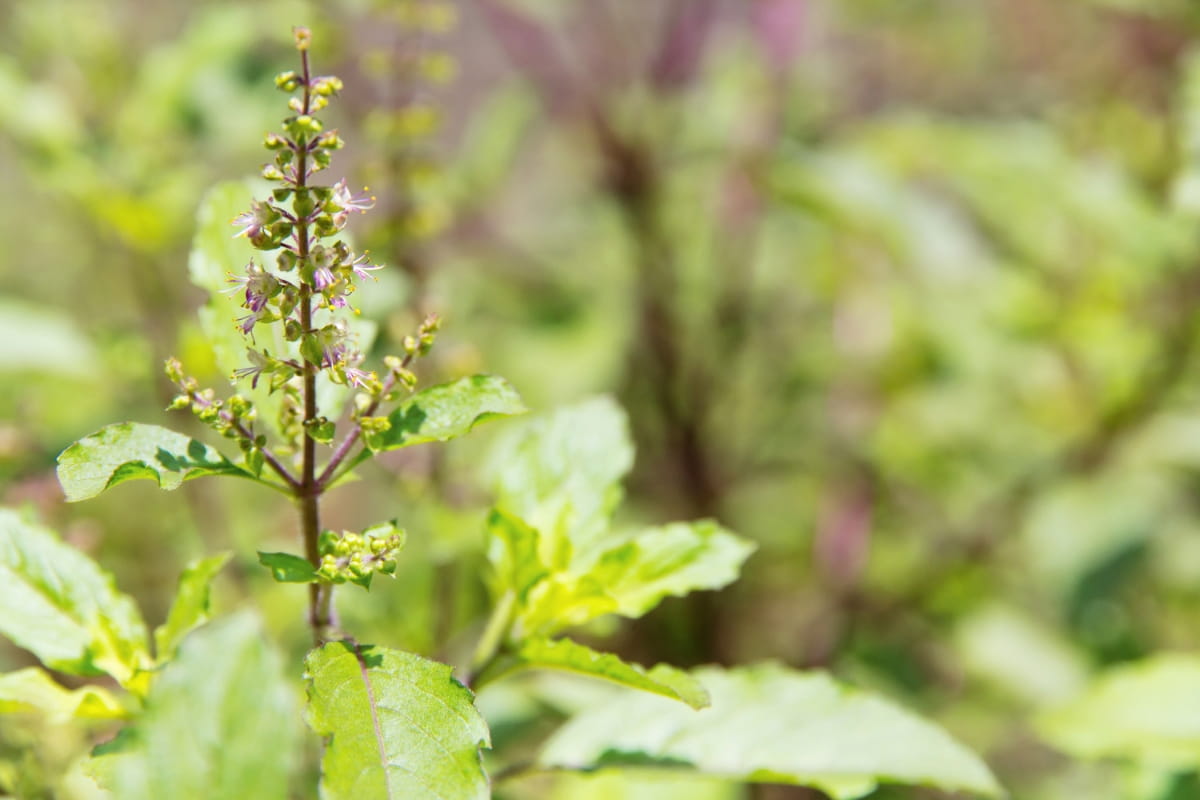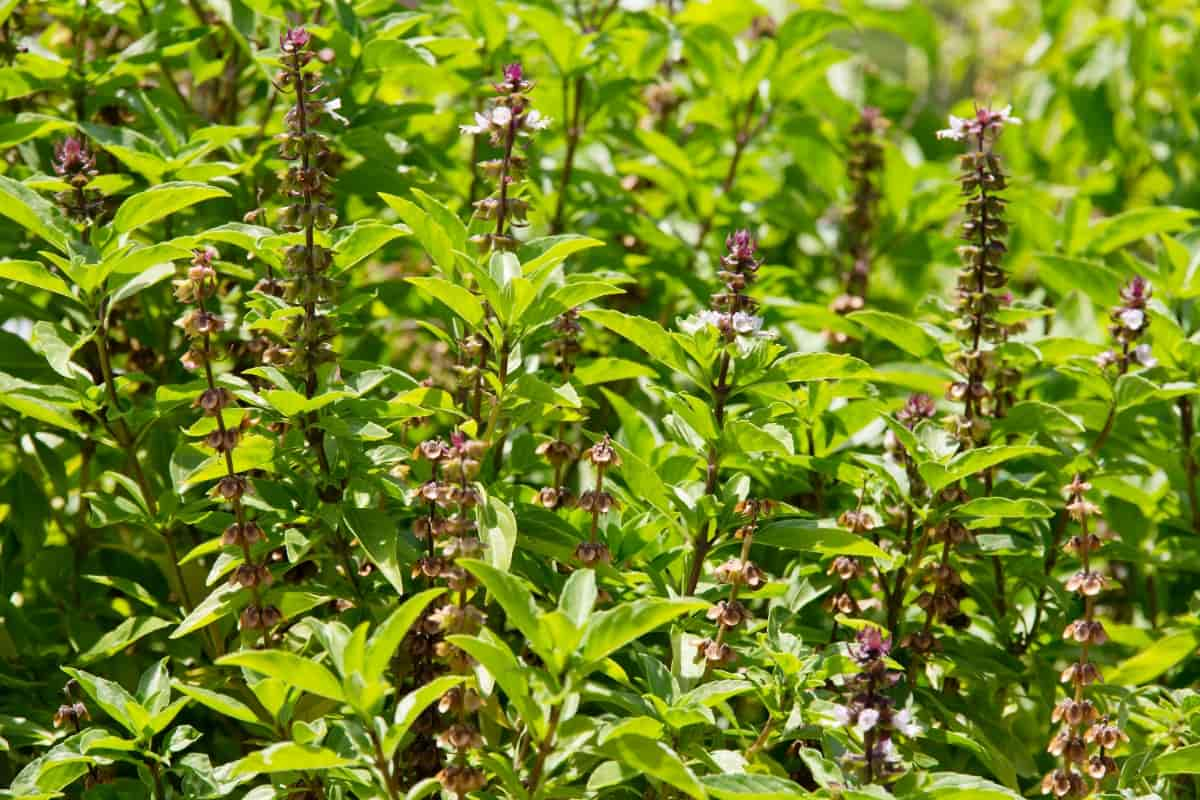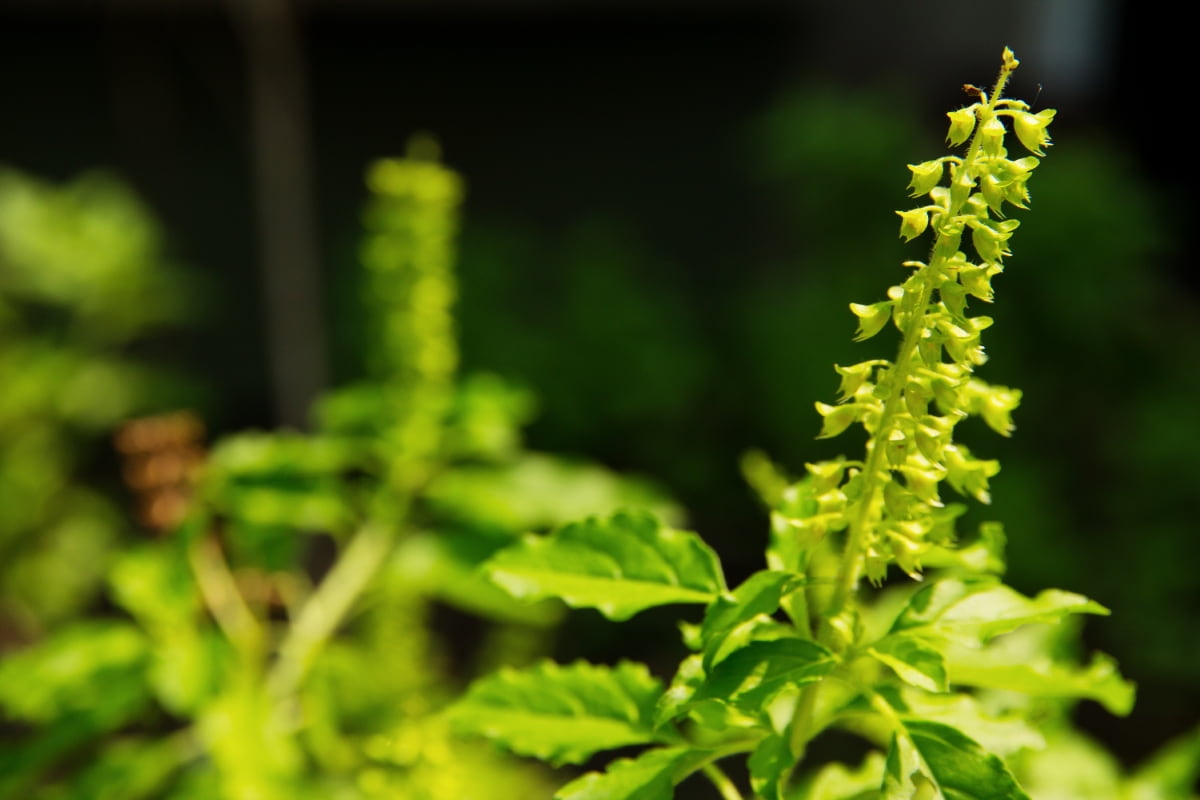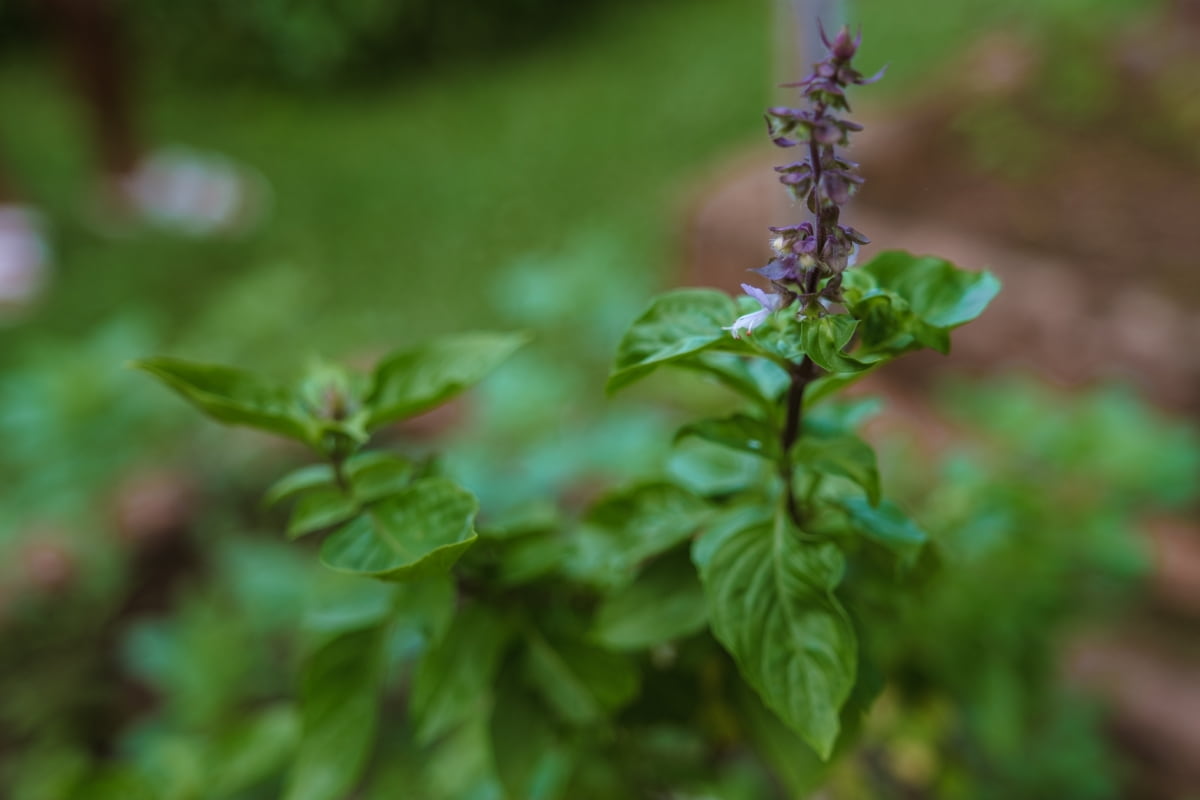Discovering issues with your tulsi plants can be disheartening, but fear not! In this concise guide, we’ll explore ten common problems, from yellowing leaves to pest infestations, that plague tulsi plants. You’ll learn effective remedies and solutions to revive your tulsi garden and ensure vibrant, healthy plants.

Tulsi Plant Characteristics
Tulsi, commonly referred to as holy basil (Ocimum tenuiflorum), is a plant that is highly regarded in India. It is grown for the purpose of producing essential oil, as well as for religious and traditional medicinal uses. The Vaishnava school of Hinduism places a great emphasis on the usage of this ingredient, which is also used in the production of herbal teas.
An upright, many-branched subshrub, the plant normally grows to a height of thirty to sixty centimeters and has leaves that are either green or purple in color, simple, petioled, and intensely fragrant. On racemes that are elongated, the purple flowers are arranged in whorls that are close together.
The Ram tulsi, also known as the Krishna or Shyam tulsi, and the common wild vana tulsi are the three primary morphotypes that are farmed in India and Nepal simultaneously. There are a number of phytochemicals that are found in tulsi, including as eugenol, caryophyllene, terpinene-4-ol, and rosmarinic acid. These phytochemicals are responsible for the fragrant and therapeutic capabilities they possess.
Common Tulsi Plant Problems: Causes and Solutions
Yellowing Leaves
- Causes: Yellowing leaves can be attributed to overwatering, nutrient deficiencies, or pest infestations such as aphids, spider mites, or whiteflies.
- Solutions: Adjust watering practices, ensure proper nutrient levels, and address pest infestations using natural remedies like neem oil or insecticidal soap.
Brown Leaf Tips
- Causes: Brown leaf tips may result from underwatering, excessive sunlight, or low humidity levels.
- Solutions: Maintain consistent watering, provide adequate shade, and increase humidity around the plant.
Leaf Drop/Shedding
- Causes: Stress from environmental factors, nutrient deficiencies, or root disturbances can lead to leaf shedding.
- Solutions: Ensure proper environmental conditions, address nutrient deficiencies, and care for the plant’s roots during transplanting or repotting.
In case you missed it: How to Use Neem Oil on Tulsi Plants: A Natural Way to Get Rid of Bugs and Make it Bushy

Leaf Spots
- Causes: Fungal or bacterial infections, as well as water splashing on leaves, can cause leaf spots.
- Solutions: Use preventive measures such as proper spacing, adequate air circulation, and applying organic fungicides like neem oil.
Powdery Mildew
- Causes: Tulsi plants are susceptible to powdery mildew, a fungal disease that thrives in humid environments and may be seen on tulsi plants.
- Solutions: Improve air circulation, avoid overhead watering, and apply organic fungicides to control powdery mildew.
Pest Infestation (Aphids, Spider Mites, Whiteflies)
- Causes: The tulsi plants are susceptible to attack from these pests because they feed on the sap of the plants and cause the leaves to become discolored and distorted.
- Solutions: To control infestations, use natural remedies such as neem oil, insecticidal soap, or companion planting with pest-repelling plants like marigolds or mint.
Curling Leaves
- Causes: Sucking insects like aphids and whiteflies can cause leaf distortion and curling.
- Solutions: Address the underlying pest infestation using natural insecticides and companion planting to repel pests.
Leaf Scorch
- Causes: Leaf scorch can result from excessive sunlight, high temperatures, or inadequate watering.
- Solutions: Provide shade during peak sunlight hours, ensure proper watering, and maintain adequate soil moisture.
In case you missed it: 10 Homemade Pesticides for Tulsi: Ways to Get Rid of Bugs Naturally from Holy Basil Plant

Nutrient Deficiencies (Iron, Magnesium)
- Causes: It is possible for tulsi plants to suffer from nutritional deficits if the soil does not contain sufficient amounts of magnesium or iron.
- Solutions: Use organic fertilizers rich in iron and magnesium, and ensure proper soil pH for optimal nutrient uptake.
Frost Damage
- Causes: Exposure to frost or cold temperatures can cause damage to tulsi plants, leading to wilting and discoloration.
- Solutions: During periods of cold weather, it is important to insulate plants from frost by either covering them or transferring them to a more protected place.
Root Rot
- Causes: The withering and yellowing of leaves may be caused by root rot, which can be caused by either overwatering or soil that does not drain well.
- Solutions: Improve soil drainage, adjust watering practices, and consider repotting in well-draining soil.
Dying
- Causes: Various factors, such as severe pest infestations, diseases, or environmental stress, can contribute to the decline of tulsi plants.
- Solutions: Identify and address the underlying causes, provide appropriate care, and consider propagation from healthy plant parts to preserve the species.
Tips for Natural Remedies and Solutions
- Homemade Pesticides: To control pest infestations and fungal diseases, use natural homemade pesticides such as neem oil, insecticidal soap, or organic sprays.
- Companion Planting: Plant pest-repelling companions like marigolds, mint, or garlic to deter pests from tulsi plants.
- Proper Watering: Maintain consistent and appropriate watering practices to prevent water-related issues such as root rot and leaf wilting.
- Soil Nutrition: Ensure adequate soil nutrition by using organic fertilizers, compost, and balanced soil amendments to address nutrient deficiencies and promote plant health.
- Environmental Control: Implement measures to improve environmental conditions, such as providing shade, maintaining optimal humidity levels, and enhancing air circulation to prevent diseases and stress-related issues.
- Early Detection: Regularly inspect tulsi plants for signs of pest infestations, diseases, or environmental stress, and take prompt action to address any issues before they escalate.
In case you missed it: How to Control Hydroponic Basil Pests and Diseases Naturally: How to Get Rid of Them with Natural and Organic Treatment

Effective management of common tulsi plant problems requires a combination of proactive care, natural remedies, and environmental control. Tusi plant enthusiasts can promote the health and vitality of these revered plants by understanding the causes and implementing targeted solutions for issues such as yellowing leaves, brown leaf tips, leaf drops, pest infestations, and nutrient deficiencies.
- Types of Fungicides Used in Agriculture
- Common Issues in the Fruit Development Stage of Pomegranate Farming
- Fruit Development Issues in Papaya: Easy Solutions and Treatment
- Soil-Borne Diseases and How to Protect Your Plants
- Practices to Prevent Disease Spread in the Garden
- From Wilted to Thriving: How to Treat Root Rot Naturally in Houseplants
- Natural Remedies to Cure Brown Spots on Fig Tree Leaves
- Natural Solutions for Poinsettia Problems: 100% Effective Remedies
- How to Control Calla Lily Problems: Natural Remedies for Leaf and Flower Problems